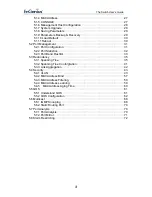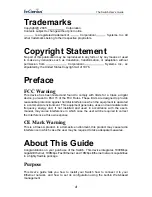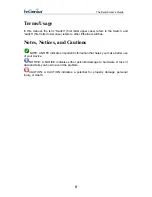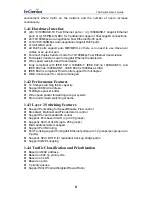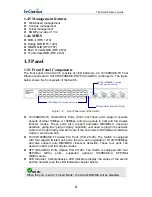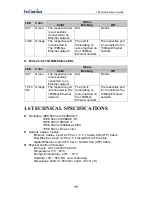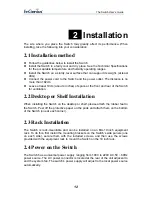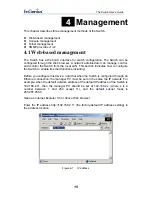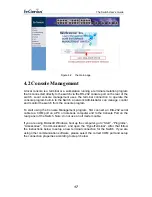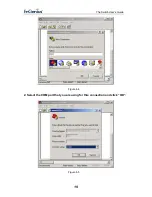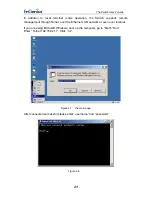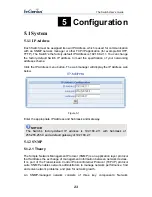
The Switch User’s Guide
environment where traffic on the network and the number of users increase
continuously.
1.4.1 Hardware Interface
z
(24) 10/100BASE-TX Fast Ethernet ports + (4) 1000BASE-T Gigabit Ethernet
ports or (4) SFP(Mini GBIC) for 4 additional copper or fiber Gigabit connections
z
24×10/100Mbps Auto-negotiation Fast Ethernet RJ45 ports
z
4×10/100/1000Mbps
Auto-negotiation Gigabit RJ45 ports
z
4×mini-GBIC
ports
z
All RJ45 ports support auto MDI/MDIX, so there is no need to use cross-over
cables or an up-link port
z
Full-/half- duplex transfer mode for 10/100Mbps Fast Ethernet transmission
z
Full-duplex transfer mode for Gigabit Ethernet transmission
z
Wire speed reception and transmission
z
Fully compliant with IEEE 802.3 10BASE-T, IEEE 802.3u 100BASE-TX, and
IEEE 802.3ab 1000BASE-T , IEEE 802.3z 1000Base-LX/SX
z
IEEE 802.3x compliant Flow Control support for full duplex.
z
DB-9 Console port for console managed
1.4.2 Performance Features
z
12.8 Gbps switching fabric capacity
z
Support 8K MAC address.
z
512KBytes
packet
buffer
z
Wire speed packet forwarding rate per system.
z
Store and forward switching scheme.
1.4.3 Layer 2 Switching Features
z
Support Port-setting for Speed/Disable, Flow control
z
Broadcast, Multicast and Flooded storm control
z
Support Per-port bandwidth control
z
Supports Port-based VLAN (up to 49 groups)
z
Supports 802.1Q VLAN (up to 256 groups)
z
MAC address table managed
z
Support
Port
Mirroring.
z
Port Trunking support for Gigabit Ethernet ports(up to 12 groups/per-group up to
8 ports)
z
Supports 802.1D STP for redundant back up bridge paths
z
Support IGMP snooping
1.4.4 Traffic Classification and Prioritization
z
Based on MAC address.
z
Based on 802.1p priority bits.
z
Based
on
VLAN
z
Based on ports
z
4 priority queues
z
Support Strict Priority/Weighted Round Robin
8



